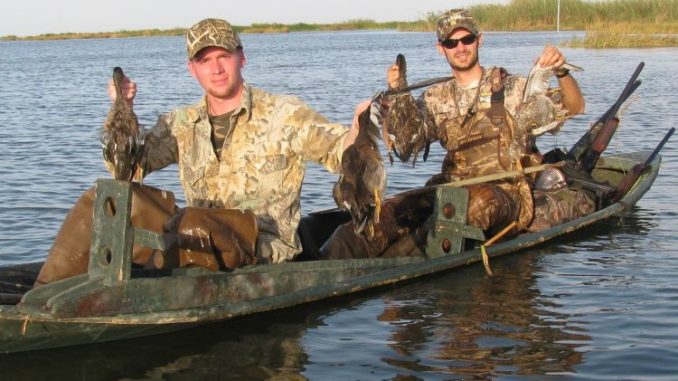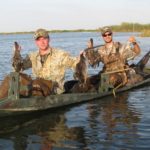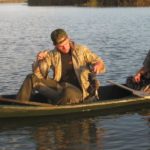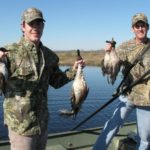
You can’t stick with your early season tactics and continue killing ducks this month. Here’s how to adjust to track down waterfowl honey holes.
“Some honey hole!” Eddie wailed as he stomped onto the porch after tying up the boat. “We was watching ducks most of the morning! But NONE would come NEAR Doc’s blind!
“And we was calling like crazy! But dey was all landing behind us in the middle of da marsh!”
Doc was right behind him, shrugging.
“Well,” he smirked, “we were limiting out easy at my honey hole blind from the youth hunt till almost Christmas! Remember? Mostly teal and greys — SOME guest!
“Here I figured I’d take my favorite brud-n-law to my favorite duck honey hole for his only hunt of the season, and LOOK at the thanks I get!”
Doc had a point. His brother-in-law Eddie was acting more the spoiled brat than usual — which is really saying something.
But Eddie had a point, too, as Artie was quick to clarify.
“You ain’t hunting the same deer stand in January as you did for bow season are you, Doc?” Artie asked. “You ain’t hunting around persimmon and white oaks in late January, are ya? Then why’re ya hunting the same duck blind in late January that you hunted for the opener?
“You gotta be outcha mind! Just like for deer, the food sources for ducks have changed drastically since the early season! Get wit da program! Think you’d know that by NOW!”
“Right, Artie!” Doc yelled. “For somebody who spends 95 percent of his time at da hunting camp watching football, making gumbo and sipping brewskies, how’d you suddenly become Joe Expert duck hunter?
Pelayo was in the corner by the keg, smirking up a storm.
He recognized that Artie had just regurgitated — almost word for word — his own spiel about our usual late-season duck strategy.
We’d just arrived at Doc’s place and were pumped for a dy-NO-mite hunt — despite (or actually because of) the “terrible duck weather,” as traditionalists would call the warm, blustery spell we were experiencing.
The temperature, you see, was only dropping to the mid-60s at night and the wind was howling from the southeast — as often happens between January cold fronts.
“It ain’t the temperature that affects duck movement! Dey ain’t like deer!” Artie blurted, addressing Eddie but acknowledging Pelayo from the corner of his eye. “It’s the WIND! ANY wind is good for duck hunting! Makes ’em move around. And it’s gonna be howling tomorrow from the southeast!”
“Yeah, great!” Doc countered. “Tides will be even higher than today! That scatters the ducks in our southeast marshes — that’s probably what hurt us today. Be even WORSE tomorrow!”
“OK — then Eddie’s coming with us,” Pelayo offered. “How’s that?”
“Fine with me,” Eddie said with a shrug. “Can’t be any worse than today.”
“But be prepared for a little work,” Pelayo said. “Maybe some push-pole action, like when we duck hunted in our younger days — might bring back some good Tigerland and Fat City memories!”
“OK: You’re on!” Eddie said.
In Southeast Louisiana’s tidal marshes, ducks are notoriously nomadic.
Naturally, all ducks — regardless of habitat — respond to hunting pressure. By January, this is obviously a major factor in their flight patterns.
But, on top of that, in the tidal marshes we’ve got those fickle water levels that scatter or concentrate ducks from day to day, depending on wind direction.
Just a 5-degree shift in the wind from north to just slightly northeast (or vice versa) can mean a 10-inch tidal change in two days.
An area crammed with greys and teal during your scouting trip might have two mergansers and three dos gris when you come back.
The high tides put the milfoil, coontail and widgeon grass out of beak range.
According to most aerial surveys, Southeast Louisiana generally holds more ducks near season’s closing than during the opener in November. But they’re usually holding in different places — and have altered their flight patterns because of hunting pressure, food sources and tides.
Earlier, during a fishing trip, Pelayo and I had noticed that a section of marsh no more than 400 yards from Doc’s “Honey Hole blind” (which sat in a deep pond) had been covered by peavine and more of that freshwater vegetation that’s becoming so common in this area due to the damming of the MRGO.
We made a note of it for a potential duck honey hole on a high tide.
Now this seed-rich area — prime dabbling-duck fodder — had been flattened by the short sunlight and freezes.
And to cap it off, the blustery southeast winds made for a super high tide that we surmised would cover it right at perfect dabbling level.
Close scrutiny of Google map close-ups, plus a little scouting on a fishing trip during a super-high tide, showed one skinny trenasse winding through this area from a slightly bigger ditch into a little pond, which it seemed to drain.
The hunt unfolds
The next morning at 7:30, we beached Pelayo’s skiff in the flooded spartina and hauled out the two pirogues. Yes, we were late by most duck hunting timetables, but the lateness was deliberate.
We waited for those southeast winds to really kick up, blow the fog away and hopefully get the ducks flying.
As we paddled to our honey hole, a few flocks were already dropping in. Pelayo pointed and we all thumbs-upped.
We paddled furiously through the skinny trenasse against the wind for about 300 yards. As expected, the super-high tide allowed us to glide easily through a scrawny ditch toward our spot.
A pair of greys drifted overhead, and we stopped to gawk. They were a couple: drake and hen. They were already pairing up.
They cupped while directly over, banked and set a gliding course for the feast and orgy raging up ahead.
Then some greenwings buzzed over and quickly plunked into the duck gathering.
I was panting by this point — but not from the exertion.
We hit the edge of the opening and at least 100 ducks promptly took wing.
The sight and sounds were glorious.
As usual, they quickly split up by species. We kept paddling until we got a glimpse of the place that attracted them.
Yes! It was that matted-down area consisting of peavine, smartweeds and three-square grass with a little spartina poking through it.
This honey hole stretched for about 100 square yards.
Our ’roggs were almost scraping bottom as we started chunking out the 27 dekes.
We jammed the pirogues into a small patch of marsh alders, stuck some palmetto fronds and stalks of fluffy bamboo around them and went to work on the calls, mixing short quacks with whistles.
Six greenwings buzzed in immediately, circled once and plopped in the dekes.
A pair of bluewings followed.
We opened up just as they touched down. Both stayed with us, along with a slow greenwing.
Off to my right, I caught movement: a small flock of widgeon, no mistaking them. In flight they always remind me of chubby wood ducks.
Eddie was pointing to his left and hunkering down as another flock of greenwings blazed our way.
Two toots from Pelayo’s whistle and the widgeon locked-in on the decoys. In seconds they started cupping. Those necks started craning back and forth.
But at 70 yards the three in the lead started veering off.
My own whistle came up, and I tooted softly — twitting my tongue against the roof of my mouth.
Pelayo kept up his tooting — and then Eddie offered a short-sharp hail, followed by a few chuckles.
It worked like a charm.
The birds swung back on course. Their wings started gliding again, barely moving — the landing gear started to go down, but they were still 50 yards out.
Just a l-i-t-t-l-e-e too far!
Then a jet-like roar of wings came from behind, and a flock of greenwings rushed in from behind, practically knocking off our caps. They swerved just in front of the widgeon, blazed out into the opening and started turning back.
Pelayo and I looked at each other trying to stifle guffaws.
But it was shooting time. Four of the widgeon had drifted. They were over the center of the decoy spread.
BLAM! BLAM! BLAM!
Three shots, and two widgeon crumpled. A third staggered off to my left.
I followed it with the bead, led him about 2 feet and touched the trigger — BLAM!
Its neck sagged, and the widgeon splashed down.
The whoops and high fives lasted almost three minutes and scared off the flocks of teal that were closing from two sides.
But it hardly mattered at the moment.
By 11:30 a.m., we were two shy of the three-man limit (mostly greys and teal) but plenty pumped and still high-fiving up a storm.
So we called it a hunt.
Shoulda seen Doc’s face when we pulled up!





